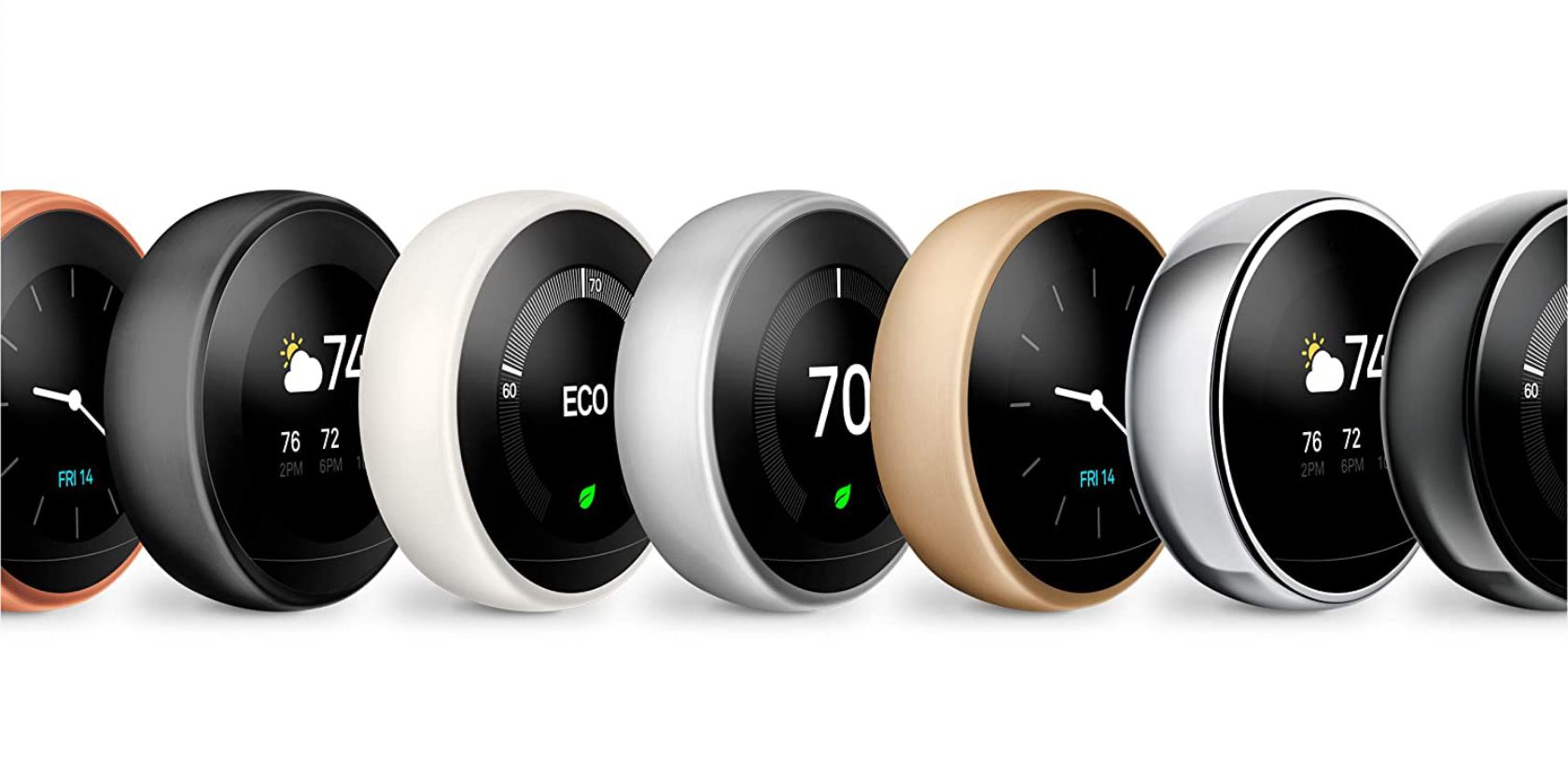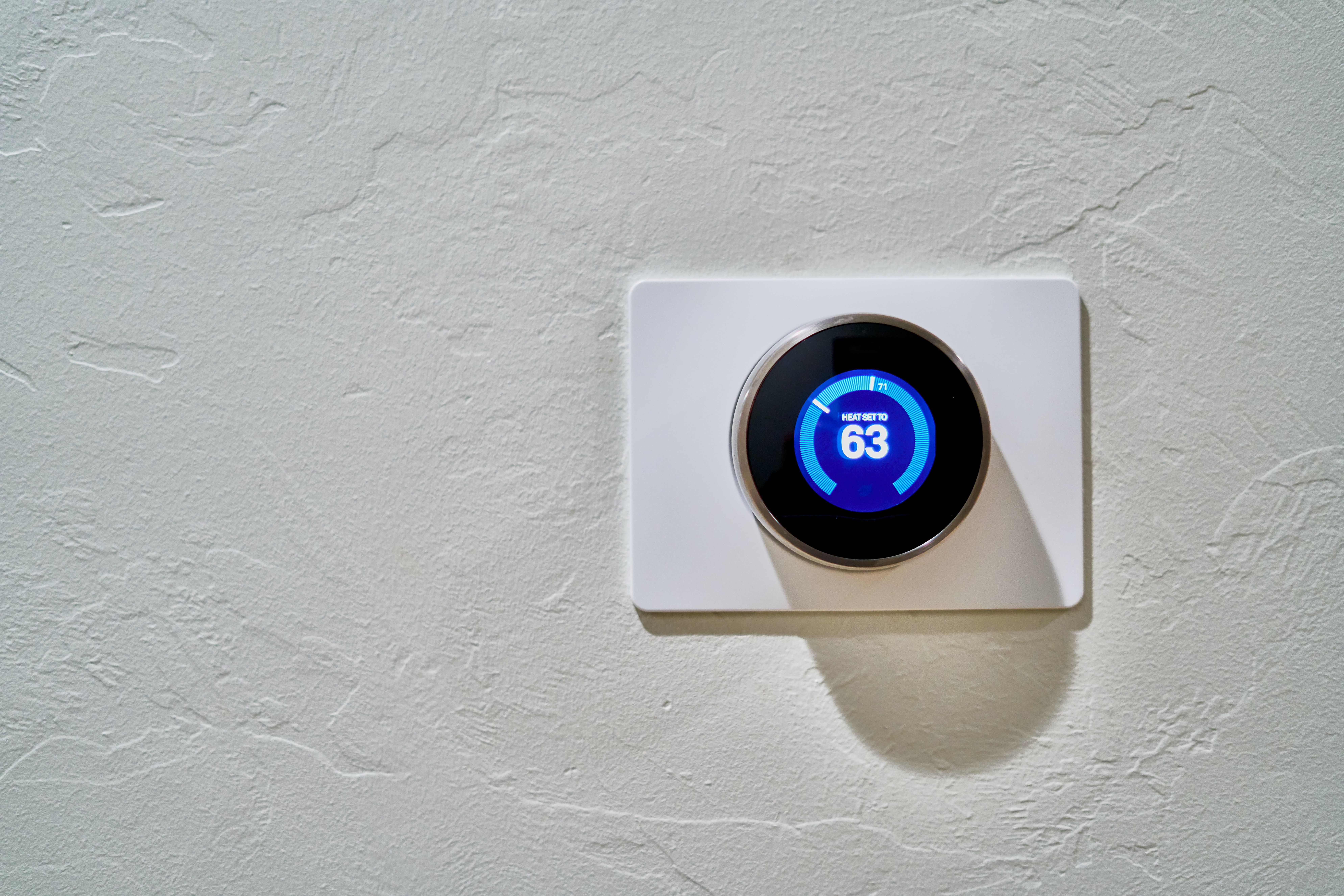Coming home to a sweltering, stuffy house after a long day at the office or school is unpleasant, to say the least. Maybe you've experienced the reverse: a return to what feels like a frozen tundra and a teeth-chattering wait for the heater to catch up.
No one wants to wait around for the household thermostat to kick into gear—but the expense of keeping the air conditioning or heat running while you're away for eight hours or more isn't exactly inviting either. Enter the Google Nest Thermostat.
What Is the Nest Thermostat?
Developed by Nest Labs and later acquired by Google, the Nest Thermostat is an AI-enabled thermostat that optimizes the heating and cooling of its environment to only use the energy needed, when it's needed. It's commonly known as a smart thermostat, one of the most common types of smart home devices. The smart thermostat "learns" your preferences over time and begins to automatically adjust the temperature of your home or office to meet those needs, ultimately saving you both money and energy in the long run.
The Nest Thermostat works in tandem with the Google Home app for iOS or Android, as well as the Nest app for iOS or Android. You only need to download the Google Home app if you have or plan to use other devices such as Google Wifi, Chromecast, or Google Home.
The optional Nest Pro installation service can do all the hard work if you're not handy around the house. Along with determining the best place in your home to put your Nest Thermostat, the installation technician can also teach you how to use the device and connect it to your other smart home devices.
After installation, the Nest Thermostat continuously learns about your lifestyle. As long your Nest Thermostat is connected to Wi-Fi, you can change the controls and settings through the Google Home app or Nest app from anywhere.
How Does the Nest Thermostat Work?
The Nest Thermostat is equipped with several sensors that detect not only the current temperature but also other environmental variables such as humidity levels, whether anyone is present in the room, and how much sunlight is coming in through the windows. All of this data helps the thermostat determine how best to maintain a comfortable environment while using as little energy as possible—a process that continues to evolve and improve over time as more data points are collected.
After several weeks of manual use, the Nest Thermostat will have learned enough to start making changes automatically. By default, the Nest Thermostat will revert to Eco Temperatures to save energy when you are away. You can fine-tune your Eco Temperatures in the Nest app by tapping the Settings gear icon, selecting your device, and then selecting Eco Temperatures under the Options menu.
With Nest Thermostat, switching from heating to cooling and adjusting the temperature can be done manually or through the app. The Google Home app lets you access your device settings, energy history, and scheduling preferences. You can access a range of information about the status of your smart home at your fingertips.
Using Bluetooth, the Nest Temperature Sensor keeps track of the temperature across several rooms throughout your home. That information will better help the Nest Thermostat determine if your home needs to be cooled or heated based on customized settings. If you're new to smart devices, check out our beginner's guide to smart home technology for more insights.
Our Favorite Features of the Nest Thermostat
While temperature sensors and thermostats have been around for years, the Nest Thermostat has many features that make it an essential part of every smart home. Most homes will have varying temperatures due to size, insulation, and the number of windows. With this, many traditional thermostats are prone to overheating or overcooling some areas, leading to higher electricity or natural gas bills than necessary.
With the Nest Thermostat, you can access special daily and monthly reports on your energy usage and personalized recommendations on reducing it. The Nest Thermostat also has safety mechanisms to help prevent temperature-related damage to your home.
Let's take a look at some of our favorite features. Needless to say, the list of Nest features worth trying keeps growing.
Perfect Temperature Scheduling with Time-to-Temp and Early-On
The Nest's Time-to-Temp feature estimates how long it will take your home to reach its target temperature. The Early-On function automatically calculates how early the Nest should turn on the heating or cooling to reach your scheduled temperature before you arrive.
Smart scheduling is ideal for cooling a room down before bedtime or cranking up the A/C after your family leaves the house for the day. Adapting to various weather forecasts, the Nest Thermostat will begin adjusting the temperature within the best possible time frame. The result is a welcoming home—and potentially half the electric bill.
Multi-Room Monitoring and Seasonal Savings
The Nest Thermostat lights up when you pass by and displays the time, weather, and temperature on its large and bright display. Blending into any home, it is available in a variety of colors and five languages. Additionally, any other smart home device linked to your Google Home system will be able to detect your presence. The synced device will alert the Nest Thermostat, which will adjust the temperature to your preference.
By installing multiple Bluetooth-connected sensors, the Nest Thermostat can also identify the rooms that require adjustment during certain times of the day. For example, during the morning, you may spend more time in the warm living room or kitchen; while in the evening, you may prefer a cool bedroom to help you sleep.
The Nest Thermostat helps save you energy by preventing your heating or cooling system from working too hard to cool a room that it is not monitoring. With the Seasonal Savings feature, your Nest Thermostat can make small tweaks throughout the year to help reduce energy consumption.
Notifications for Safety and System Maintenance
Aside from temperature regulation, the Nest Thermostat has several other features to help you maintain, repair, and improve existing heating or cooling systems. With built-in capabilities, the Nest Thermostat helps detect possible issues with your equipment and alerts you through the app.
The Nest app also sends you air filter reminders monthly, bi-annually, or annually depending on your usage. With the Safety Temperature feature, the Nest Thermostat helps ensure your home stays safe from extreme temperatures that may cause issues such as a pipe bursting or freezing. It will automatically turn on the heat until your home or office returns to a safe temperature, and you'll receive messages notifying you of the progress via the app.
Get the Nest Thermostat for Your Smart Home Today
The Nest Thermostat uses machine learning-enabled software that saves you time, money, and energy. It helps make decisions for you that you can trust. Whether it is through efficient adjustments, early detection of equipment problems, or saving money to heat or cool your home, the Nest Thermometer is a good investment.
However, as with any smart home device, investing in the larger ecosystem helps you get more out of your Nest Thermometer experience. Whether it is getting a Google Nest device, additional sensors, or hubs, the value of smart home products, including the Nest Thermometer, grows when paired with other devices.



